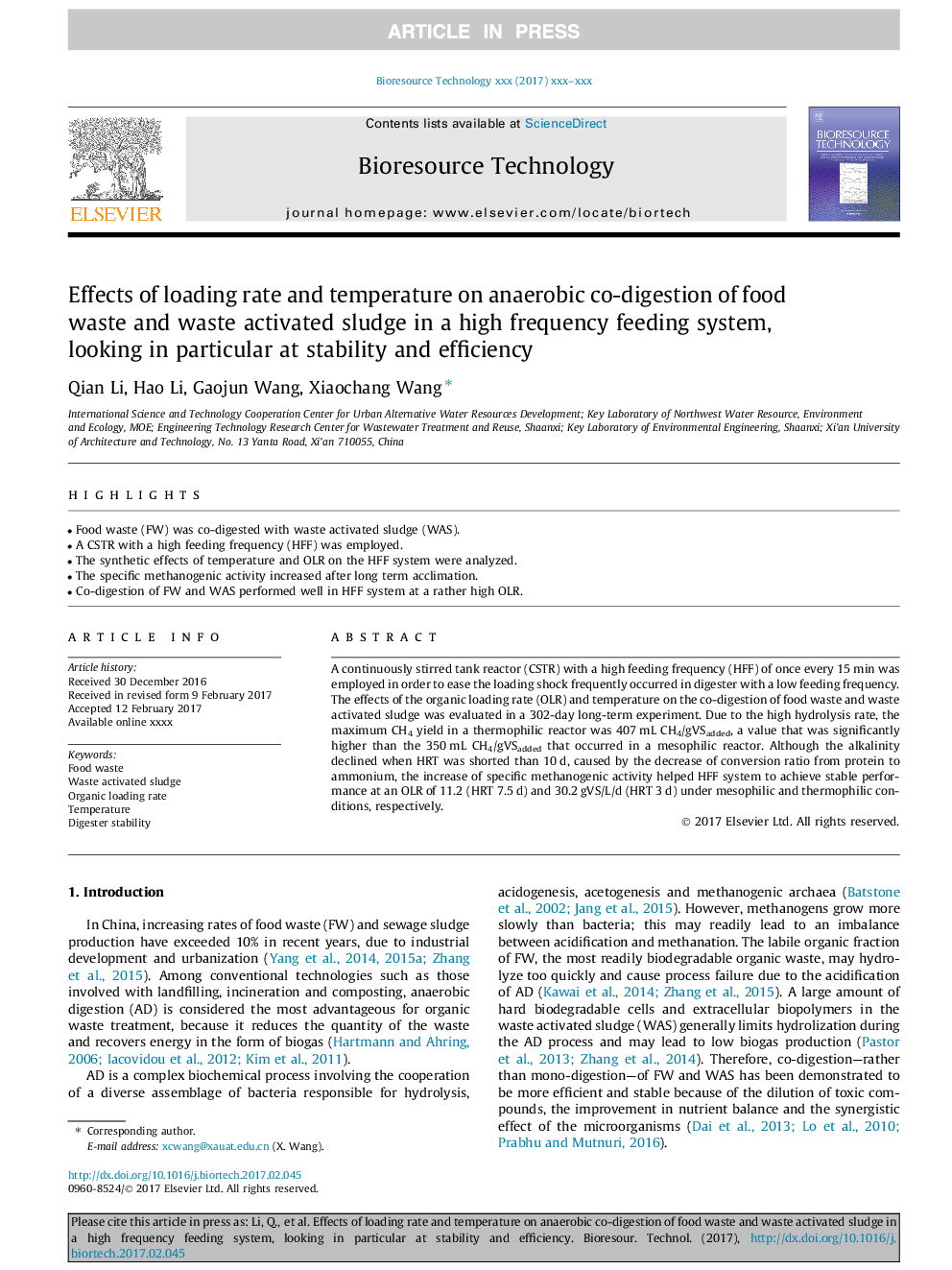| Article ID | Journal | Published Year | Pages | File Type |
|---|---|---|---|---|
| 4997455 | Bioresource Technology | 2017 | 9 Pages |
Abstract
A continuously stirred tank reactor (CSTR) with a high feeding frequency (HFF) of once every 15Â min was employed in order to ease the loading shock frequently occurred in digester with a low feeding frequency. The effects of the organic loading rate (OLR) and temperature on the co-digestion of food waste and waste activated sludge was evaluated in a 302-day long-term experiment. Due to the high hydrolysis rate, the maximum CH4 yield in a thermophilic reactor was 407Â mL CH4/gVSadded, a value that was significantly higher than the 350Â mL CH4/gVSadded that occurred in a mesophilic reactor. Although the alkalinity declined when HRT was shorted than 10Â d, caused by the decrease of conversion ratio from protein to ammonium, the increase of specific methanogenic activity helped HFF system to achieve stable performance at an OLR of 11.2 (HRT 7.5Â d) and 30.2Â gVS/L/d (HRT 3Â d) under mesophilic and thermophilic conditions, respectively.
Related Topics
Physical Sciences and Engineering
Chemical Engineering
Process Chemistry and Technology
Authors
Qian Li, Hao Li, Gaojun Wang, Xiaochang Wang,
